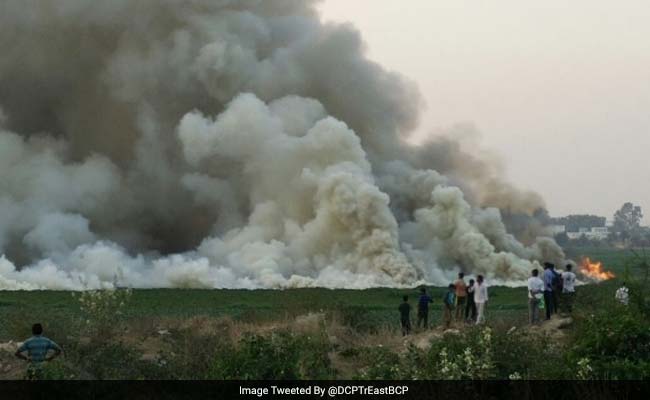Bellandur Lake is the largest lake in Bengaluru and encompasses an area of over 891.9 acres and it is essential in preserving the storm water infrastructure and ecosystem of the extensive Koramangala and Challaghatta Valley areas. Unfortunately, this lake now holds the dubious reputation of being one of the most polluted lakes in the city.
The problem of pollution and encroachments of lakes like the one currently witnessed in Bengaluru is not new. Rampant urbanisation and densification in areas around lakes and storm water drains has not been accompanied by regulation and enforcement of laws and rules. Instead, a culture of deliberate negligence has flourished.

The fire, it is now believed, began in the clumps of dry hyacinth and weed around the lake.
The rampant culture of apathy and corruption on the part of government agencies and elected representatives means public monies are diverted away from these kinds of environmentally important projects. The overwhelming clamour about traffic by the city's so-called VIPs means that while public money is made available for suspect projects like a steel flyover, other projects struggle to find money. The lack of accountability of city agencies like Bengaluru Water and Sewage Board (BWSSB) means no one is ever held to account for the widespread destruction of the city's lake and ground water eco-system. The irony, of course, is that on one hand, the government is presiding mutely over Bengaluru's network of lakes and ground water which would be a natural source of drinking water, and on the other hand, spends crores to pipe water from River Cauvery to meet cities' drinking water needs.

The lake has generated more than a water body's fair share of headlines
I have been at the forefront of the issue and have witnessed the crass violations of zoning regulations by government agencies and builders despite the area being declared ecologically sensitive. Ordinary citizens have repeatedly raised concerns and frustrations at the government, including a Change.org petition by Sanchita Jha that gathered thousands of signatures and had my support.
In May 2015, I had raised this issue in parliament and followed up with a detailed request to the Minister of Environment, Forests and Climate Change about the plight of lakes and storm-water drains in Bengaluru. Through this letter, I also requested the Ministry to investigate and check the status of the implementation of the National Green Tribunal (NGT) directions that includes buffer zones around water bodies and raja-kaluves (storm-water drains). Strict implementation of the NGT's directions would ensure that Bengaluru can be a city of gardens and lakes and its citizens live without fear of a destroyed environment. The implications of leaving this unaddressed has serious implications on not just the environment but also public health at large.

The government has deputed experts to develop plans for cleansing the lake.
The current state of Bellandur Lake in many ways represents the rampant abuse and negligence of our city that describes the city's dysfunctional governance, turning a proud, beautiful city with a long history and heritage slowly into unliveable urban chaos, burdening millions of hardworking citizens and their families with living challenges.
The state government is on its last lap with a few months to go before elections and sadly, I do not expect a government that has not acted in last four years to do so now. But Bengaluru deserves better!
(Rajeev Chandrasekhar is a Rajya Sabha MP and Technology Entrepreneur.)
Disclaimer: The opinions expressed within this article are the personal opinions of the author. The facts and opinions appearing in the article do not reflect the views of NDTV and NDTV does not assume any responsibility or liability for the same.


